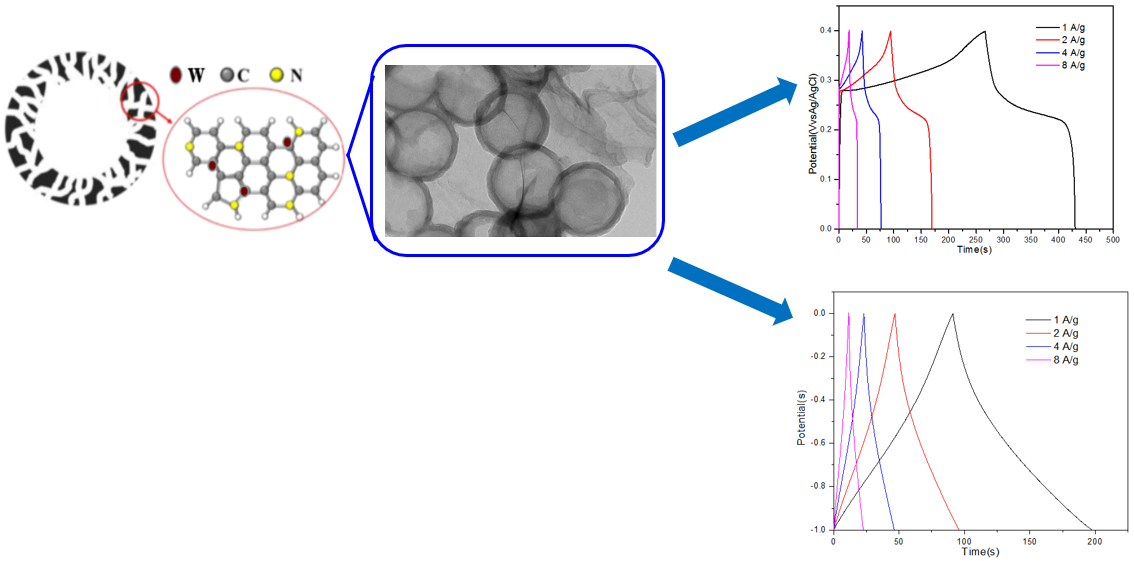Kasetsart University, Department of Chemistry, Bangkok, Thailand
Development of high surface area nanomaterials for supercapacitors
Electrochemical supercapacitors as one of the next generation energy storage devices have attracted increasing attention because of their fast charge/discharge rates (within a few seconds), long cycle life (>1×105 cycles), high power density (20 kW/kg), high cycle efficiency, and excellent safety. We are currently developing and characterizing the hybridization of transition metal-based nanomaterials with different conductive carbons as the effective electrode materials to improve the charge transfer ability.
We are investigating the ultrafine cobalt or nickel-based compounds within N-doped mesoporous carbon as a supercapacitor electrode material due to its fast ion transport or charge storage. These guarantee the further enhancement of supercapacitive performances.
Considerable effort has been devoted to effective design of hierarchical porous carbon containing abundant micropores, interconnected mesopores, and appropriate macropores in order to improve their electrochemical performance. We are currently investigating a novel hybrid structure that consists of tungsten-based compound nanostructures and nitrogen-doped hollow core mesoporous shell carbon. In such hierarchical structures, abundant micropores serve as the locations for charge accumulation and interconnected mesopores provide channels that decrease the ion diffusion distance to the inner micropores, which play an essential role in high energy storage resulting in a large capacitance and high energy density. While appropriate macropores can play the role of facilitating fast ion transport by supplying ion-buffering reservoirs and ion-transport pathways to store more electrolyte ions, which ensure the high rate capability and high power density.
In addition, considering the excessive consumption of fossil fuels and the demand for sustainable eco-friendly resources and processes, increasing attention has been focused on utilizing biomass waste to synthesize 3D hierarchical porous carbons due to the abundance, low cost, unique porous structure of biomass precursors, and large surface area. These advantageous characteristic are necessary to obtain high specific capacitance. We are exploring 3D hierarchical porous carbons synthesized from agricultural wastes because of their richness in honeycomb-like epidermal, vascular, and ground tissues. Therefore, transforming agricultural wastes into 3D hierarchical porous carbons is an effective way to utilize this biomass waste.






